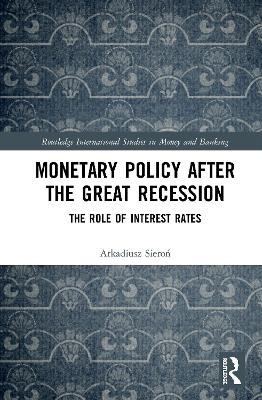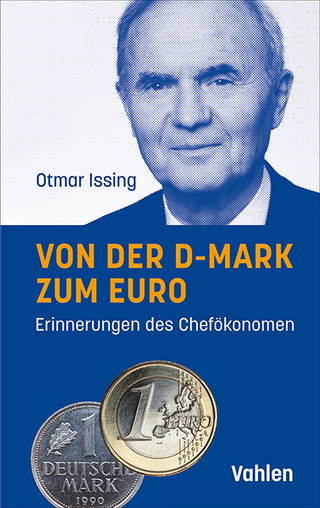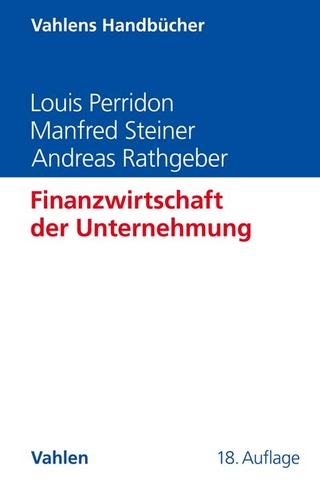
Monetary Policy after the Great Recession
Routledge (Verlag)
978-0-367-47189-7 (ISBN)
Walter Bagehot noticed once that “John Bull can stand many things, but he cannot stand two per cent.” Well, for several years, he has had to stand interest rates well below that, in some countries even below zero. However, despite this sacrifice, the economic recovery from the Great Recession has been disappointingly weak. This book’s aim is to answer this question.
The central thesis of the book is that the standard understanding of the monetary transmission mechanism is flawed. That understanding adopts erroneous assumptions—such as, that low interest rates always stimulate economic growth by boosting the credit supply, investment, and consumption—and does not fully take into account several unintended channels of monetary policy, such as risk-taking, high level of debt, or zombification of the economy. In other words, the effectiveness of monetary policy is limited during economic downturns accompanied by the debt overhang and the balance sheet recession, and generates negative effects, which can make the policy counterproductive.
The author provides a thorough analysis of the issues related to the interest rates in the conduct of monetary policy, such as the risk-taking channel of monetary policy, the portfolio-balance channel and the wealth effect, zombie firms in the economy, the misallocation of resources, as well as the neutral interest rate targeting and the difference between the neutral and natural interest rate and the negative interest rate policy.
The book is written in an accessible and engaging manner and will be a valuable resource for scholars of monetary economics as well as readers interested in (unconventional) monetary policy.
Arkadiusz Sieroń received the title of Doctor of Economic Sciences in 2016; and has been an assistant professor at the University of Wrocław since 2017. He is a board member of the Polish Mises Institute of Economic Education and author of several dozen scientific publications (including in such periodicals as the “Prague Economic Papers,” “Quarterly Journal of Austrian Economics,” and “Research in Economics”). He received scholarships at The Ludwig von Mises Institute in America (2014 and 2018 Summer Fellowships), won the 2018 Lawrence W. Fertig Prize for the best paper advancing economic science in the Austrian tradition in 2017, and placed third in the sixth International Vernon Smith Prize for the Advancement of Austrian Economics.
INTRODUCTION CHAPTER I: THE INTEREST RATE CHANNEL; OR, CAN ONE MAKE A HORSE DRINK WATER? CHAPTER II: THE PORTFOLIO-BALANCE CHANNEL; OR, ARE MONETARIST BETTER THAN KEYNESIANS? CHAPTER III: SHOULD WE BE AFRAID OF VENTURERS? MONETARY POLICY AND RISK TAKING CHAPTER IV: SHOULD WE BE AFRAID OF ZOMBIES? MONETARY POLICY AND RESOURCE ALLOCATION CHAPTER V: ARE CENTRAL BANKS NEUTRAL? MONETARY POLICY AND THE NEUTRAL INTEREST RATE CHAPTER VI: IS THERE LIFE BELOW ZERO? MONETARY POLICY AND NEGATIVE INTEREST RATES CHAPTER VII: ARE WE FALLING INTO A DEBT TRAP? MONETARY POLICY AND DEBT SYNOPSIS AND FINAL CONCLUSIONS APPENDIX 1: WHAT ELSE WILL CENTRAL BANKS TRY TO DO? APPENDIX 2: SHOULD CENTRAL BANKS CUT INTEREST RATES IN RESPONSE TO THE COVID-19 CRISIS?
| Erscheinungsdatum | 11.11.2020 |
|---|---|
| Reihe/Serie | Routledge International Studies in Money and Banking |
| Zusatzinfo | 42 Line drawings, black and white; 42 Illustrations, black and white |
| Verlagsort | London |
| Sprache | englisch |
| Maße | 156 x 234 mm |
| Gewicht | 480 g |
| Themenwelt | Wirtschaft ► Allgemeines / Lexika |
| Wirtschaft ► Betriebswirtschaft / Management ► Finanzierung | |
| Betriebswirtschaft / Management ► Spezielle Betriebswirtschaftslehre ► Bankbetriebslehre | |
| Wirtschaft ► Volkswirtschaftslehre ► Finanzwissenschaft | |
| Wirtschaft ► Volkswirtschaftslehre ► Makroökonomie | |
| Wirtschaft ► Volkswirtschaftslehre ► Wirtschaftspolitik | |
| ISBN-10 | 0-367-47189-2 / 0367471892 |
| ISBN-13 | 978-0-367-47189-7 / 9780367471897 |
| Zustand | Neuware |
| Informationen gemäß Produktsicherheitsverordnung (GPSR) | |
| Haben Sie eine Frage zum Produkt? |
aus dem Bereich


